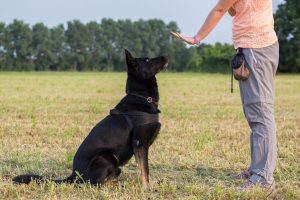Tips On How to Stop Your Dog from Pulling on A Leash

Let’s start with why your dog is pulling on his lead. We can all agree that it’s probably because there’s something super exciting to see, and you walk slower than your doggie would like you to. But unfortunately, knowing what to do when your dog pulls aren’t always easy.
It’s your responsibility to teach your dog to stop pulling in a way they understand. So how can you accomplish this? The simplest way is by rewarding them for doing what you want them to do, and managing the situation when (or ideally before) they start showing non-desired behaviors.
Step 1 – Start with The Right Equipment
Let’s ensure you have the right equipment to start your dog’s training. We recommend starting with a good dog leash of about 6 feet and getting a good harness. We like the FunRun Dog Harness from Dog Performance Gear because it is made in one piece, has no pressing seams, and is stitched equally on both sides.
In addition, the harness cut is longer than other harnesses on the market and does not cause chafing at the elbows. Bungee attachments aren’t recommended, and you should discard any equipment causing discomfort.
Step 2 – Implements Some General Rules
We recommend only having adults holding the leash during training (for safety reasons) and starting with only one person walking your dog.
Step 3 – The Technique
Start with your dog by your side, hold a treat or toy in front of his nose, and walk. Take one step, praise, and reward. Keep going and eventually add more steps in between each recognition and reward. Once this becomes too easy, start adding distractions.
If your dog struggles, you should adjust your distance from the distraction or increase the amount of praise and reward.
Step 4 – One Step at A Time
You should start teaching your dog how to be on a leash in a low-distraction environment such as inside your home. You can work up to the garden, street, and eventually to a place with more distractions. It would be best if you also worked with them at a distance on the leash and slowly reduced that distance.
The time you keep your dog on a loose leash should also keep getting longer… and he/she should get rewarded for it.
Step 5 – Practice and Be Consistent
Have you heard that practice makes perfect? So, stay consistent with your doggie’s training and routine, and your dog should be a great walker in no time.
Now, get to work!








